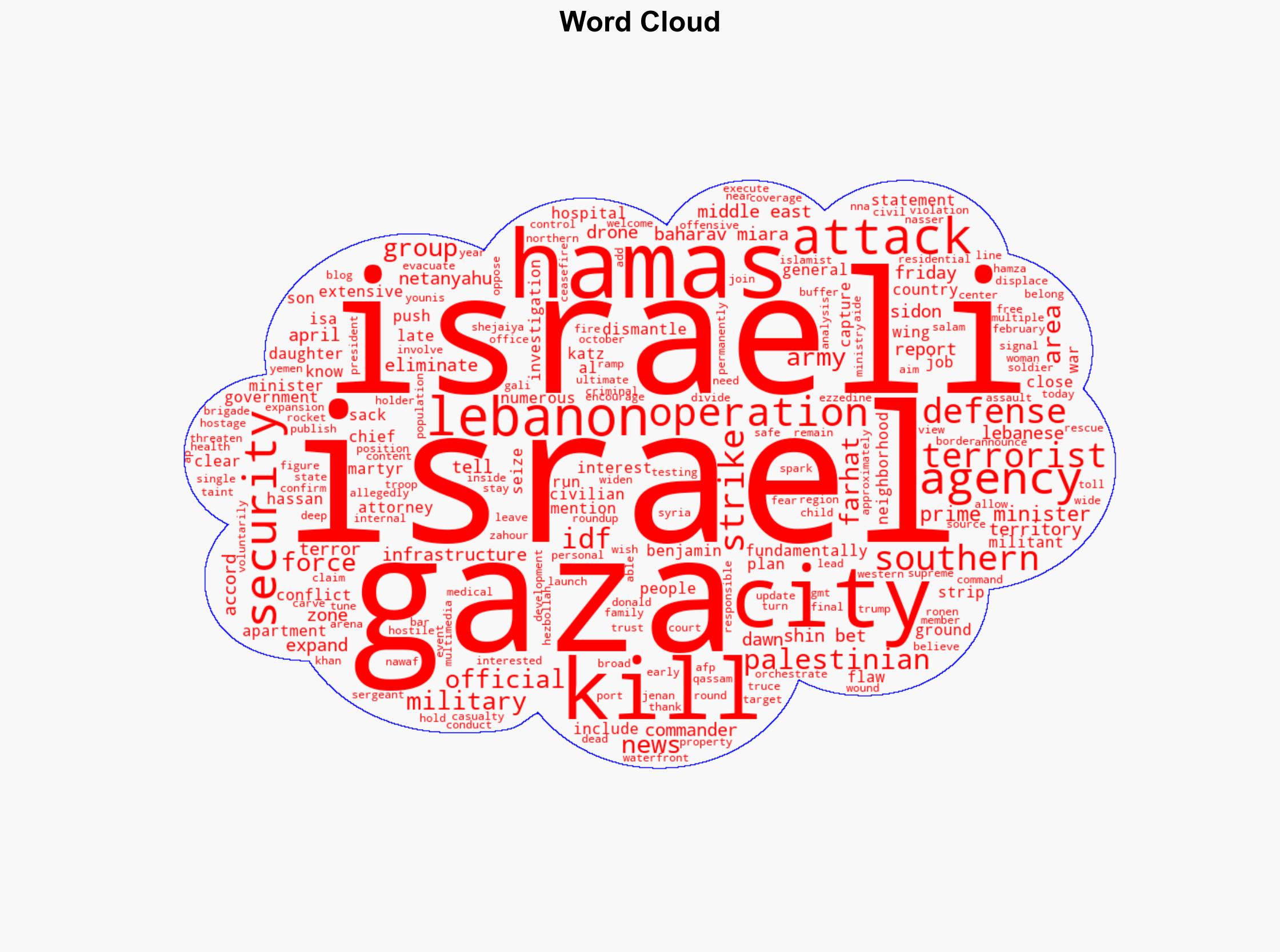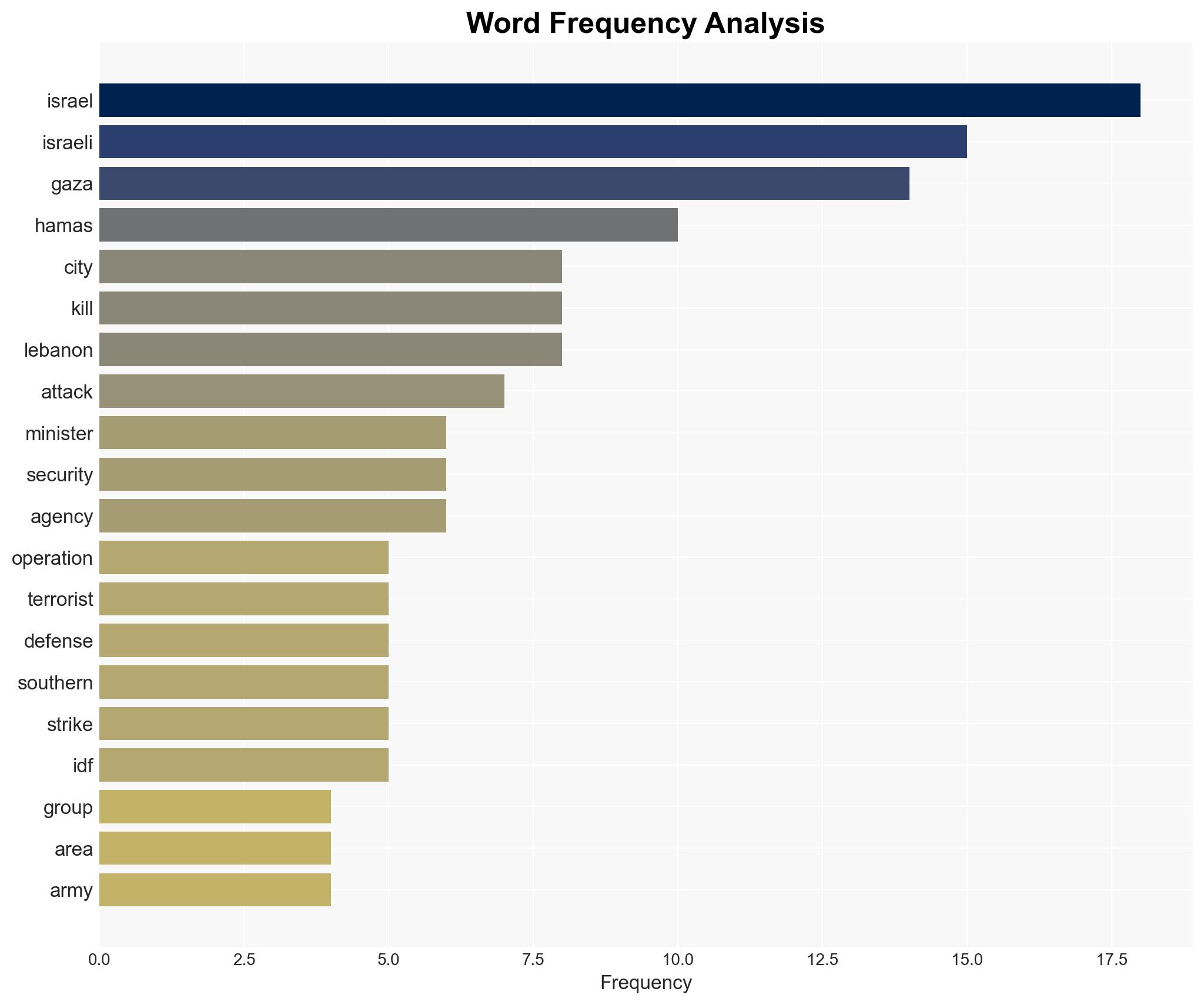Middle East Israel expands Gaza City operation – DW (English)
Published on: 2025-04-04
Intelligence Report: Middle East Israel Expands Gaza City Operation – DW (English)
1. BLUF (Bottom Line Up Front)
Israeli forces have intensified their ground operations near Gaza City, targeting Hamas infrastructure and eliminating key figures. This expansion aims to create a security buffer zone and dismantle terrorist networks. The operation has resulted in significant casualties, including civilian deaths. The situation poses a risk of escalating regional tensions and potential displacement of the Gaza population.
2. Detailed Analysis
The following structured analytic techniques have been applied for this analysis:
General Analysis
Israeli troops have expanded their ground operations in Gaza, focusing on dismantling Hamas’ military capabilities. The operation has reportedly captured extensive areas to establish a security zone. The Israeli Defense Forces (IDF) have targeted command centers and other infrastructure, claiming to have eliminated numerous terrorists. The operation’s expansion is seen as a strategic move to weaken Hamas and secure Israeli borders.
The conflict has resulted in significant casualties, with reports of civilian deaths, including women and children. This raises humanitarian concerns and could lead to international scrutiny. Additionally, there are fears of permanent displacement of the Gaza population, aligning with previous geopolitical strategies.
3. Implications and Strategic Risks
The ongoing military operations in Gaza present several strategic risks:
- Increased regional instability, potentially drawing in neighboring countries such as Lebanon.
- Heightened tensions between Israel and Palestinian factions, risking further escalation.
- Potential international backlash due to civilian casualties and humanitarian concerns.
- Risk of long-term displacement of the Gaza population, affecting regional demographics and stability.
4. Recommendations and Outlook
Recommendations:
- Engage in diplomatic efforts to de-escalate tensions and seek a ceasefire agreement.
- Enhance intelligence-sharing with regional partners to monitor and mitigate potential threats.
- Implement humanitarian assistance programs to address civilian needs and reduce international criticism.
Outlook:
Best-case scenario: A negotiated ceasefire leads to a reduction in hostilities and stabilization of the region.
Worst-case scenario: Escalation of conflict results in broader regional involvement and significant humanitarian crises.
Most likely outcome: Continued military operations with intermittent negotiations, leading to a prolonged conflict with periodic escalations.
5. Key Individuals and Entities
The report mentions significant individuals and organizations:
- Israel Katz
- Gali Baharav Miara
- Ronen Bar
- Benjamin Netanyahu
- Hassan Farhat
These individuals are central to the developments in the region, influencing both military operations and political decisions.





